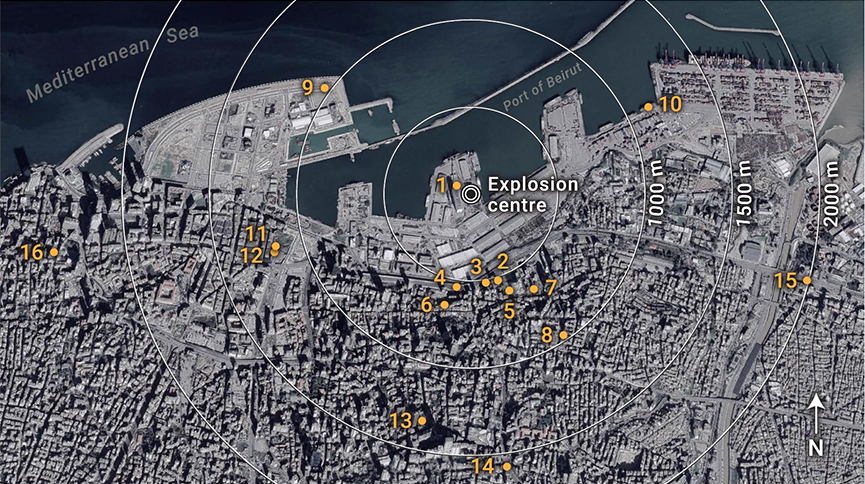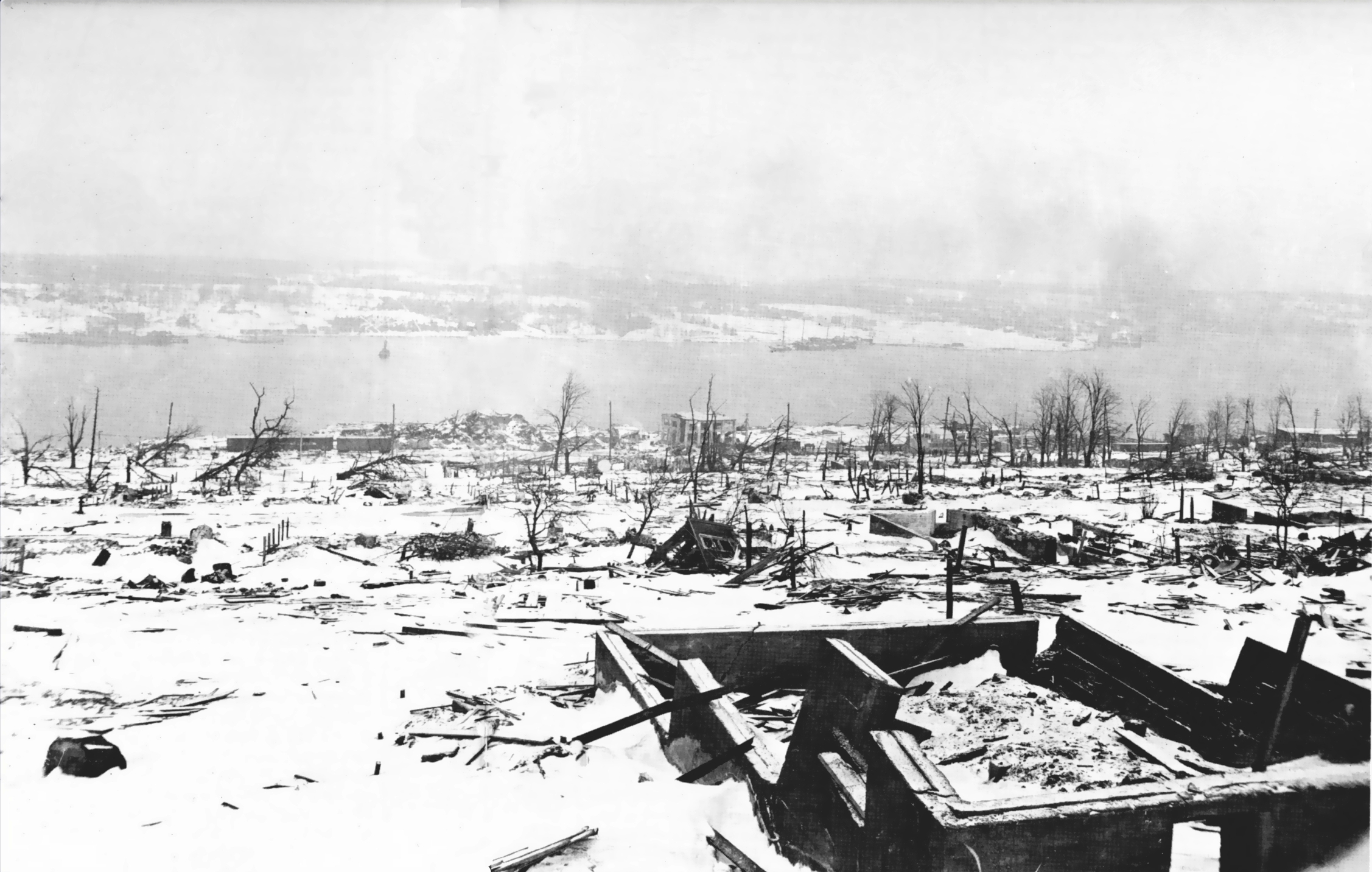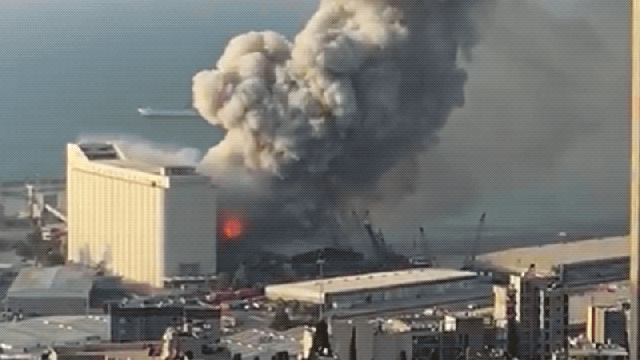By analysing videos uploaded to social media, scientists have calculated the strength of the blast that devastated the city of Beirut in August, finding it to be among the biggest non-nuclear explosions in human history.
When a warehouse at the Port of Beirut in Lebanon exploded this past summer, it released the equivalent of 500 tons of TNT and possibly as much as 1.12 kilotons of TNT, according to new research published in the scientific journal Shock Waves. That’s somewhere between 3% and 7% of the yield produced by the atomic bomb detonated at Hiroshima, which packed a blast yield equal to 15 kilotons of TNT. Accordingly, the explosion in Beirut now ranks among the 10 biggest accidental non-nuclear explosions of all time.
Around 2,750 tons of ammonium nitrate stored at Beirut’s port exploded on August 4, 2020, resulting in 200 deaths and over 6,000 injuries. The resulting shockwave damaged buildings and homes across a wide swath, leaving nearly 300,000 people homeless.
Woaahh so close !!#Beirut_Explosion #BeirutBlasts #BeirutBombings #Beiruit pic.twitter.com/a3Bvv6fnoi
— World of Sci-Tech-Nature (@AllaboutScienc3) August 6, 2020
To calculate the explosive yield, a team led by Sam Rigby from the Blast and Impact Engineering Research Group at the University of Sheffield tracked the speed of the blast as it tore through the city. They did so by analysing over a dozen videos uploaded to social media, all of which captured a reasonably clear view of the blast and visible landmarks.
A preliminary study from the same team estimated the blast yield at somewhere between 1.0 and 1.5 kilotons TNT, but that was based on a limited set of videos. The new study is more comprehensive, as it includes 16 high-quality videos that met the team’s criteria, namely a direct line-of-sight view of the explosion, identifiable landmarks (including an identifiable spot from which the video was taken), synchronised audio and video, a view of the warehouse prior to detonation, and footage ending after the arrival of the shockwave.

Rigby and his colleagues estimated the shockwave’s arrival time to 38 different locations in the city. Using Google Earth, the team measured the distance from the warehouse to a given location. The scientists used well-established laws of blast propagation to estimate the approximate yield of the explosion, coming up with the low bound of 500 tons TNT and a reasonable upper limit of 1.12 kilotons TNT. This estimate jibes well with similar research, in which scientists used hydroacoustic and seismic data to measure the explosive yield.
The amount of energy released during the Beirut explosion was around 1 GWh, which is enough to power roughly 100 homes for a year, according to a Sheffield University statement, describing it as “one of the largest non-nuclear explosions ever recorded.”
The Beirut explosion ranks as the sixth most powerful accidental non-nuclear explosion in history, according to a Wikipedia page on the subject. Number one on this lamentable list is a blast that happened in Halifax, Nova Scotia, Canada, on December 6, 1917. This horrific wartime explosion occurred when two ships collided in Halifax Harbour, igniting TNT, picric acid, benzol fuel, and other highly flammable cargo. The estimated yield of this blast, which killed around 2,000 people, is 2.9 kilotons TNT, or one-fifth the size of the atomic bomb used at Hiroshima (until 1945, the Halifax blast remained the largest human-made explosion in recorded history).

The new study can be used for future reference, such as informing first responders of likely injuries and structural damage at various distances from ground zero, according to the researchers.
“After seeing the events unfold, we wanted to use our expertise in blast engineering to help understand what had happened in Beirut and provide data that could be used to help prepare for, and save lives in such events should they ever happen again,” said Rigby in the statement.
